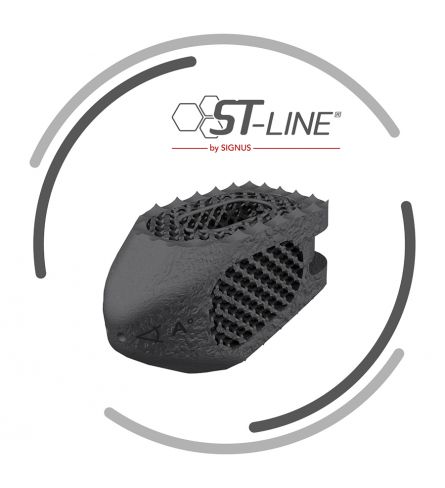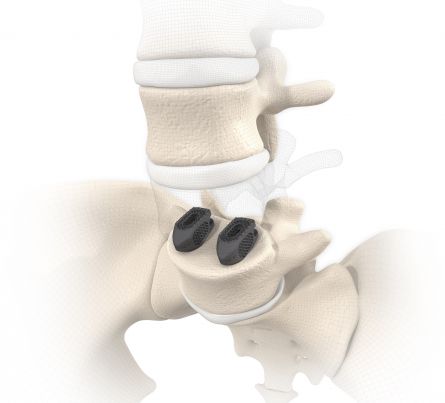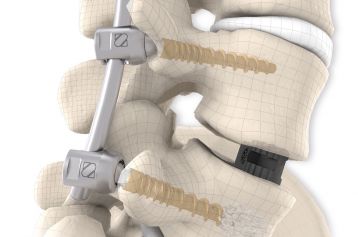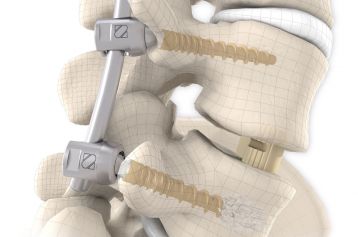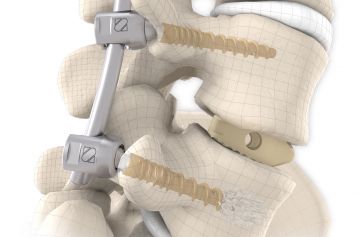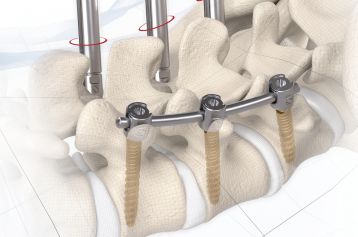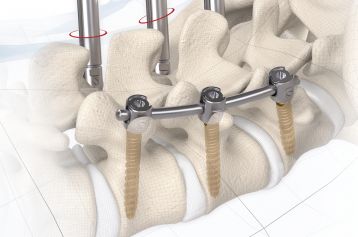TETRIS ST
Request product
start requestPosterior lumbar interbody fusion (PLIF) is today the gold standard in the treatment of degenerative disc disease. The TETRISTM ST Lumbar Fusion Implant System is designed to provide the surgeon with an optimal method for achieving immediate and long-term biomechanical stabilization and restoration of lordosis in the lumbar spine (L2 to S1). The implants are inserted bilaterally in pairs via a posterior approach.
They are intended to restore the interbody vertebral disc height and lead to solid bone fusion when used in conjunction with supplemental posterior instrumentation of the surgeons’ choice.
TETRISTM ST is placed by a PLIF (Posterior Lumbar Interbody Fusion) approach in the L2 – S1 spinal region and should be inserted in pairs. The large fenestration in the implant permits the cage to be packed with autogenous bone graft and / or allograft comprised of cancellous and / or corticocancellous bone grafts.
The inserted cages, combined with additional posterior instrumentation, lead to immediate biomechanical stabilization. This establishes the ideal conditions for vertebral body fusion.
The large selection of implants provides for a high degree of intraoperative flexibility and ensures restoration of the intervertebral space as well as the anatomical lordosis of the lumbar spine.
Placement in the gold-standard PLIF technique
Open implant design
Flattened implant apex
Large contact area with the vertebral body
Design with or without lordosis
Smooth lateral surfaces
Open, macroporous titanium structure
Increased roughness in conjunction with SIGNUS toothed cage design
The implant is manufactured from proven titanium alloy (Ti-6Al-4V)
Here you get to the eifu of TETRIS ST.



